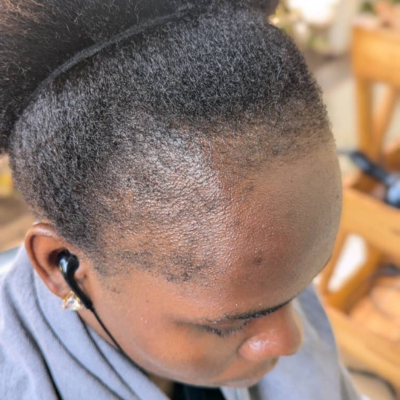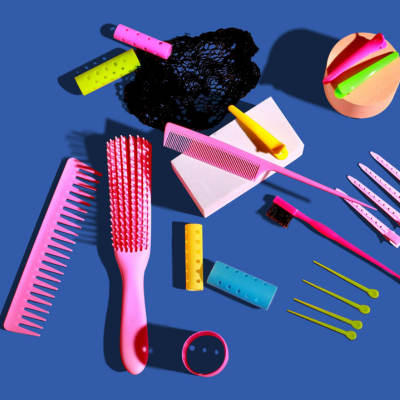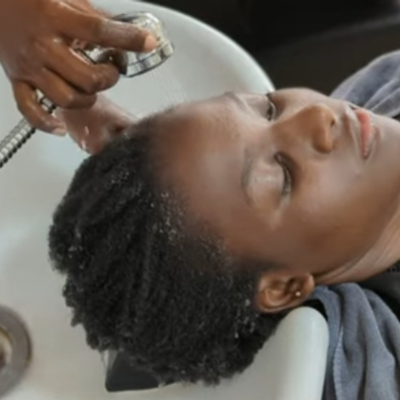- Support 24/7
- +1 (480) 468-4543
- livara@mylivara.com
What Is A Moving Scalp? Simple Tips on How To Work With One

How to Combat Excessive Hair Shedding: Tips from Experts
July 15, 2024
Thinning Edges Are Not Normal: What You Need To Know About Traction Alopecia
July 18, 2024
Have you ever encountered a phenomenon on the human head that defies hairstyling logic? We’re talking about the “moving scalp,” a curious situation where the skin on your head seems to be move a little too easily. For those with this unique feature, a simple pull at any hair strand can send the surrounding scalp moving just as easy along with the hair, creating a wobblish effect. Now, before you start questioning your place in the human evolutionary chain, rest assured: a moving scalp is not a sign of weakness or some strange anomaly. In fact, it’s a surprisingly common experience shared by many!
Watch protective hairstylist @aubrey242 demonstrate what a moving scalp looks like when you try to braid it:
@aubri242 and its crazy because i have one too 😂😂😂 #braider #braidersontiktok
♬ eredeti hang – nickiminajpwssypops
Because of the way the scalp moves so easily, protective styling can be difficult.
A moving scalp can be both a source of wonder and frustration. Wonder, because it’s a fascinating quirk of human anatomy. Frustration, because it can make achieving that perfectly precise braid feel like an uphill battle, especially for hairstylists who encounter this during their work.
Whether you’re a hairstylist struggling to tame a wobbly scalp or someone with this unique characteristic yourself, this article is your one-stop shop for understanding the moving scalp. We’ll delve into the science behind this phenomenon, dispel the worry (because seriously, there’s none!), and most importantly, equip you with tips and tricks for navigating the world of hairstyling when your scalp has a mind (or should we say, skin?) of its own.
The Science Behind the Shift
So, what exactly makes the scalp so… mobile? The answer lies in a trio of key players:
- Connective Tissue: This intricate network of fibers connects your skin to underlying structures like muscles and bones. People with looser connective tissue naturally have more mobile skin throughout their body, including the scalp. Genetics play a big role here, so if your family has a history of “wobbly scalps,” you might have inherited this unique trait.
- Muscles: We’re not just talking about bulging biceps here! Your scalp has its own set of muscles, primarily responsible for scalp movement and facial expressions. Tightness in these muscles can restrict scalp mobility, while looser muscles might allow for more shifting.
- Hair Type: While not directly causing the movement, hair type can influence how noticeable it is. Thinner hair might reveal scalp movement more readily compared to thick, voluminous hair. However, we’ve seen that even people with thick, voluminous hair can have this issue regardless.
So, Is It a Problem?
Absolutely not! A moving scalp is a normal variation and has no bearing on your overall health. It simply reflects the unique way your body is built. However, it can present challenges when it comes to hairstyling. Precise braids, intricate updos, or achieving a perfectly straight style might require extra effort or specific techniques to account for the scalp’s movement.
Myth Buster: Pulling Your Hair Won’t Cause a Moving Scalptrich
You might have heard that over-pulling hair can lead to a moving scalp. This isn’t true. Here’s why:
- Hair and Scalp are Separate: Hair strands themselves don’t have any nerves or muscles. They’re essentially protein structures growing from hair follicles embedded in the scalp. Pulling hair might irritate the scalp or damage hair follicles, but it won’t loosen the overall scalp mobility.
- Underlying Causes: As discussed earlier, a moving scalp is primarily due to factors like genetics, muscle tension, and hair type.
Therefore, excessive hair pulling wouldn’t directly cause a moving scalp. However, it could lead to other problems like hair loss, scalp inflammation, and even traction alopecia, which is hair loss along areas like the hairline.
Moving Scalp: Friend or Foe?
Let’s clear the air: a moving scalp is absolutely no cause for concern! It’s a natural variation in human anatomy and doesn’t impact your overall health. However, it can present some challenges when it comes to hairstyling.
Hairstylists, We’ve Got You Covered
For hairstylists working with clients who have a moving scalp, achieving clean lines and precise styles can feel like a wrestling match. Not to worry (or give up on your client)! Here are some tips to help you conquer the moving scalp and create stunning hairstyles:
- Communication is Key: Start by letting your client know you’re aware of their moving scalp and explain how it might affect the hairstyle. Transparency builds trust and allows for a collaborative approach.
- Parting Prowess: Master the art of precise parting using a fine-tooth comb. Use gel to hold down the parts. This helps hold the scalp in place for a cleaner line. Watch how gel can make your partings much neater and in place:
@braidmynatural Moving scalps will have you guessing your life 😂 😩 #braider #iteachbraiders #partinghair #braidingtutorial #learntobraid #learntobraidontiktok
♬ Strawberry – Prod. By Rose
- Sectioning: Work in smaller sections when braiding or styling. This minimizes the area of scalp movement you need to manage at once, making the process more manageable.
- Patience is a Virtue: Achieving a perfect style might require a bit more patience with a moving scalp. Don’t get discouraged – practice makes perfect!
Styling with a Moving Scalp: Tips and Tricks
If you have a moving scalp, here are some ways to embrace your unique feature and rock amazing hairstyles:
- Find Your Stylist Soulmate: Look for a hairstylist experienced in working with different scalp types. Communication and understanding are key! If you’re looking for one in Uganda, our Livara hairstylists are more than glad to help! For a hair appointment, contact us here.
- Embrace Low-Movement Styles: Go for for loose styles that avoid too much movement, such as natural twists, loose braids, pineapple puffs, crochet styles, or twist-outs and braid-outs. These styles can be incredibly forgiving with a moving scalp compared to super tight or intricate styles like straight-back cornrows.
- Accessorize with Flair: Headbands and strategically placed hair clips can be your best friends! They can help disguise a moving part and add a touch of personal style.
Remember: A moving scalp is simply a quirk, not a medical issue. Understanding the factors at play and embracing your unique hair characteristics can lead to a world of gorgeous hairstyles!
The Moving Scalp: A Quirky Charm
Remember, a moving scalp is simply a unique characteristic, not a flaw. With the right approach and a little creativity, you can conquer any hairstyling challenge and showcase your personal style with confidence! As always, remember, you are a gem.



